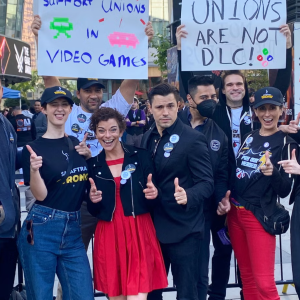
This story was originally published in the Mace and Crown’s Fall 2024 magazine.
In an era of sequels and spinoffs, original big-budget games are becoming somewhat of a rare breed. Gaming franchises that were considered trite and oversaturated a decade ago (think Call of Duty or Far Cry) are now shadows of their former selves, kept alive by a zombie economy of weapon skins, tie-in events, and grueling yearly release schedules.
Major long-standing franchises are governed more than ever by the grim rationale of the profit motive. Studios and production companies always seem to be driving towards a new frontier of growth, some way to inject more cash into a dying business model, while simultaneously rejecting any bold or original ideas for their risk factor.
This creates a market that must constantly innovate on the same tired old ideas, while adult consumers refuse to let even the most played-out franchises or characters slip away peacefully. Originality still exists in the margins, but never before have we seen a gaming market that’s so bloated and so fundamentally empty.
Many of the highest-budget games on the market seem to be made as an obligation rather than as an art form. Video game world design is an afterthought for many long-standing franchises, with many environments little more than an amalgamation of similar locations from past games. Fan favorite characters and locations are ground into the dust as studios try every imaginable angle for the same shitty ideas. Meanwhile, NPC (non-playable character) dialogue quality is at an all-time low, as shockingly amateurish or even AI-generated lines are commonplace in many games, even as backlash against the use of generative AI continues to mount. For existing franchises, things are looking bleak.
New big-budget franchises have it just as bad, as major studios place pressure for conformity and extra monetization on every facet of development. Every major shooter has to be a live-service game, every major MMO, every PVP game. The industry has somehow only adopted the worst parts of indie game culture—the endless “early access” releases, the poor quality control, the lackluster product followed inevitably by a mealy-mouthed apology—while leaving the greatest strengths of that subculture on the cutting room floor.
People are still taking risks, even with millions of dollars on the line. Larian spent most of a decade developing Baldur’s Gate 3 with some of the most complex worldbuilding and character writing this side of Disco Elysium, and it paid off in a massive way. STALKER 2 is a beloved sequel to a cult classic whose development continued even after the developers were affected by a war in their home country. But these games are exceptions to the rule, and despite their popularity and success, they’ll never have the market share of big-name franchise titles.
What so many studios don’t recognize, or perhaps can’t recognize, is that these cycles of trend-chasing and franchise milking cannot go on forever. Looter shooters kicked into high gear in 2012 with the release of Borderlands 2, and that trend spawned numerous lively franchises all the way until the Covid-19 pandemic finally reigned it in. Battle royale games, on the other hand, only debuted in force after PUBG’s release in 2017, and barely had four years in the sun before new titles essentially stopped releasing. FPS hero shooters have been limping badly since the failed release of Overwatch 2, and it took basically every character in the Marvel Cinematic Universe to resuscitate that genre. Extraction shooters are the new hotness, and I’d be shocked if that trend survives more than two years before sputtering out.
Despite my criticisms, I’m not saying we’re reaching the end of video games. My point is that in an era of slowing economic growth, wage stagnation, worsening income inequality, and growing austerity in every industry, gaming companies can’t afford to follow the same tired formulas and expect better returns every time. 2004 is not walking through that door. There is no economic miracle or massive cultural shift waiting in the wings that will save us from our current stagnation. The gaming industry has to save itself, and wake up from its stupor—after all, the price of inaction is death.
Look at the Destiny series—one of the most storied and distinguished shooters on the market, a true survivor of a game that’s weathered a decade of boom and bust cycles, and it’s at its lowest concurrent player numbers in history. It cut most of its QA team, fired its famous and renowned score composers, and ran the same playbook for years while expecting players to be wowed by a new trinket every now and then. The result is one of the best-feeling games ever made and a truly unique work of art that inspired endless copycats, now reduced to a husk of its former self. Destiny has weathered a lot of catastrophes in its long and sordid history, but this very well may be the end. The genre-defying juggernaut, created by the same crack team that made Halo Reach, is fading away because of corporate greed and cost-cutting measures. For all the controversy the Destiny series has evoked over the years, it’s still chilling to see it slip away into the ether, forgotten instead of hated.
There are so many brilliant game developers out there, and many more who are still looking for work after having been laid off from a major company. It would be a shame to let their ideas wither away unrealized because the industry decided to cut off its nose to spite its face.








